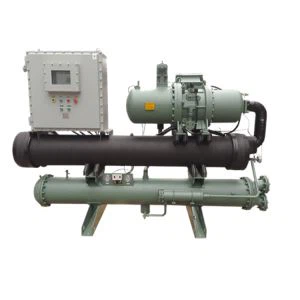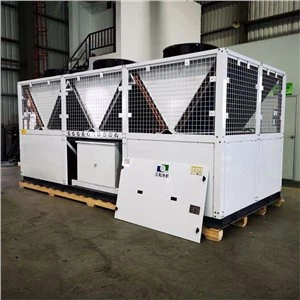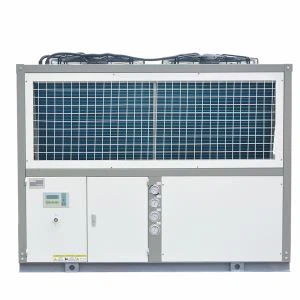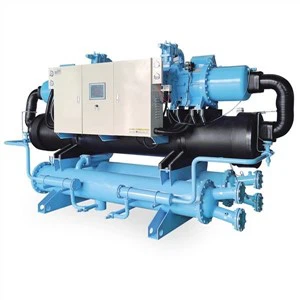What are the requirements for using a Scroll Chiller in a data center?
In the modern digital era, data centers serve as the backbone of global information technology infrastructure. These facilities house a vast array of servers and networking equipment that generate an enormous amount of heat. Efficient cooling solutions are crucial to maintain optimal operating temperatures and ensure the reliability and longevity of the equipment. Scroll chillers have emerged as a popular choice for data center cooling due to their energy efficiency, compact design, and reliable performance. As a scroll chiller supplier, I understand the importance of meeting the specific requirements of data centers when it comes to selecting and using these cooling systems.
Thermal Load Requirements
One of the primary considerations when using a scroll chiller in a data center is the thermal load. Data centers vary in size and equipment density, which directly impacts the amount of heat generated. It is essential to accurately calculate the thermal load to determine the appropriate capacity of the scroll chiller. This calculation takes into account factors such as the number of servers, their power consumption, and the ambient temperature. Oversizing or undersizing the chiller can lead to inefficient operation, increased energy consumption, and potential equipment damage.


To accurately assess the thermal load, data center operators often use specialized software tools that consider the specific characteristics of the equipment and the layout of the facility. These tools can provide detailed insights into the heat distribution within the data center, allowing for the precise sizing of the scroll chiller. Additionally, it is important to account for future growth and expansion when determining the chiller capacity to ensure that the cooling system can accommodate increased heat loads over time.
Energy Efficiency
Energy efficiency is a critical requirement for data center cooling systems, as these facilities consume a significant amount of electricity. Scroll chillers are known for their high energy efficiency, thanks to their advanced compressor technology and intelligent control systems. When selecting a scroll chiller for a data center, it is important to consider the Energy Efficiency Ratio (EER) and the Integrated Part Load Value (IPLV). The EER measures the cooling capacity of the chiller relative to its power consumption at full load, while the IPLV takes into account the chiller's performance at part load conditions, which are more common in data centers.
Look for scroll chillers that have a high EER and IPLV ratings, as these indicate better energy efficiency. Additionally, consider chillers that are equipped with variable speed drives (VSDs) on the compressors and fans. VSDs allow the chiller to adjust its output based on the actual cooling demand, reducing energy consumption during periods of low load. Some scroll chillers also feature advanced control algorithms that optimize the operation of the chiller based on real-time data, further improving energy efficiency.
Redundancy and Reliability
Data centers require a high level of reliability to ensure uninterrupted operation. Any downtime can result in significant financial losses and damage to the reputation of the organization. Therefore, redundancy is a crucial requirement when using a scroll chiller in a data center. Redundancy refers to the ability of the cooling system to continue operating in the event of a component failure.
There are several ways to achieve redundancy in a scroll chiller system. One approach is to install multiple chillers in parallel, so that if one chiller fails, the others can continue to provide cooling. Another option is to use modular chillers, such as the Air-cooled Scroll Modular Chiller, which can be easily added or removed as needed. Modular chillers also offer the advantage of scalability, allowing data center operators to increase the cooling capacity gradually as the facility grows.
In addition to redundancy, it is important to choose a scroll chiller that is built with high-quality components and has a proven track record of reliability. Look for chillers that are manufactured by reputable companies and have undergone rigorous testing and certification. Regular maintenance and monitoring of the chiller system are also essential to ensure its continued reliability.
Environmental Considerations
Data centers are increasingly being held accountable for their environmental impact. As a result, there is a growing demand for energy-efficient and environmentally friendly cooling solutions. When selecting a scroll chiller for a data center, it is important to consider the refrigerant used in the system. Traditional refrigerants, such as R-22, have a high global warming potential (GWP) and are being phased out due to their environmental impact.
Look for scroll chillers that use low-GWP refrigerants, such as R-410A or R-32. These refrigerants have a significantly lower GWP than traditional refrigerants, making them a more environmentally friendly choice. Additionally, some scroll chillers are designed to be fully hermetic, which reduces the risk of refrigerant leaks and minimizes the environmental impact.
Space and Installation Requirements
Data centers often have limited space, so it is important to choose a scroll chiller that has a compact design and can be easily installed in the available space. Consider the physical dimensions of the chiller, as well as its weight and the required clearance for maintenance and service. Some scroll chillers, such as the Air Cooled Scroll Packaged Chiller, are designed to be self-contained and can be installed outdoors, saving valuable indoor space.
The installation process of the scroll chiller should also be carefully planned to ensure proper operation and performance. This includes ensuring that the chiller is installed on a level surface, that the electrical and plumbing connections are made correctly, and that the ventilation requirements are met. It is recommended to work with a qualified HVAC contractor who has experience installing scroll chillers in data centers to ensure a smooth and successful installation.
Monitoring and Control
Effective monitoring and control of the scroll chiller system are essential to ensure its optimal performance and energy efficiency. Look for chillers that are equipped with advanced monitoring and control systems that allow for real-time monitoring of key parameters, such as temperature, pressure, and energy consumption. These systems can provide alerts and notifications in the event of a problem, allowing for timely maintenance and troubleshooting.
Some scroll chillers also feature remote monitoring capabilities, which allow data center operators to monitor and control the chiller system from a central location. This can be particularly useful for large data centers or for organizations with multiple data centers. Remote monitoring can also enable predictive maintenance, where potential issues can be identified and addressed before they cause a failure.
Conclusion
Using a scroll chiller in a data center requires careful consideration of several key requirements, including thermal load, energy efficiency, redundancy, environmental impact, space and installation, and monitoring and control. As a scroll chiller supplier, I am committed to providing high-quality, energy-efficient, and reliable cooling solutions that meet the specific needs of data centers. If you are considering a scroll chiller for your data center, I encourage you to contact me to discuss your requirements and explore the options available. Our team of experts can help you select the right chiller for your facility and ensure its proper installation and operation.
References
- ASHRAE. (2019). ASHRAE Handbook - HVAC Systems and Equipment.
- International Energy Agency. (2020). Data Centre Energy Efficiency: A Guide to Achieving Significant Savings.
- U.S. Department of Energy. (2021). Energy-Efficient Data Centers.






